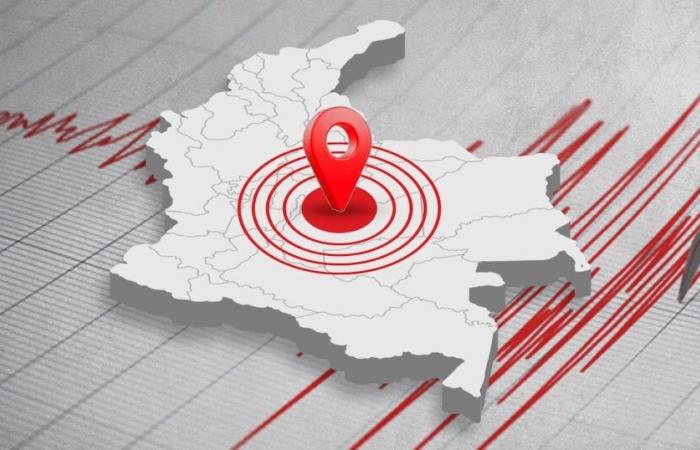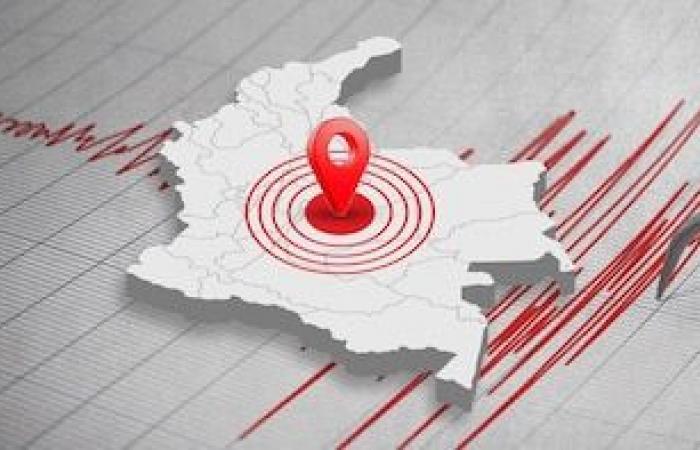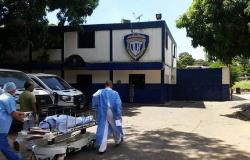And shaking of Magnitude 3.2 It was recorded in the municipality of Girón, Santanderaccording to the preliminary information of the Colombian Geological Service (SGC).
The telluric movement occurred at 05:17 (local time) on April 23 and had a depth of 140 kilometers, with a latitude of 6,90793705 and a length of -73.12748718.
It is important to mention that this information published by the SGC is preliminary and may be subject to changes or updates both in the magnitude of the earthquake, and in the exact location of origin.
In Colombia the Earthquake intensity It is measured with the European Macrosism Scale (EMS-98), which starts from intensity 2, described as “Just meaning” For very few people at rest; Level 3 is cataloged as “Lightly sense”where there may be balance of some objects.
A tremor is considered intensity 4 when it is “meaning widely” for many people inside buildings and by few abroad. The windows, doors and dishes vibrate. At level 5, “sense strongly”small objects move, there is a sway of doors or windows and slight cracks can be recorded in buildings or houses.
Type 6 intensity implies a “Mild damage”in this range some people can lose their balance; Some objects come to fall and many buildings have minor damage. Level 7 is presented when there is a “Moderate damage”that is, heavy furniture gets to move and many buildings have cracks and there may be a lining of the walls.
Finally, in the intensities above 7 a “severe damage”: At this point many people have difficulty standing; Heavy objects fall; and old and weak structures can collapse.

Colombia is considered a country of high seismic risk because it is in the Pacific Fire Beltan area that concentrates 75% of the volcanoes that exist in the world and where approximately 80% of the Stronger tremors worldwide.
Also called the Pacific Fire Ring, it is made up of the mountainous area of western Argentina, Chile, Peru, Ecuador, Colombia, Panama, Costa Rica, Nicaragua, El Salvador, Honduras, Guatemala, Mexico, the United States and Canada, and then bend at the height of the Aleutian Islands and go down the coasts and islands of Russia, Japan Taiwan, Philippines, Indonesia, Malaysia, Timor Oriental, Brunéi, Singapore, Papua New Guinea, Solomon Islands, Tonga, Tuvalu and New Zealand.
In the specific case of Colombia, the country is in two important subduction areas, since on the one hand it has the Nazca plate with the South American And the latter that also clashes with the Caribbean platewhich gives way to constantly trembling.
Given this situation, the departments of Nariño, Chocó, Caldas and Santander are the places where he trembles; In the latter is the municipality of Los Santos, which is the second most seismic area in the world.
Ecuador-Colombia of 1868
Two tremors originated in the border area of Ecuador and Colombia on August 15 and 16, 1868, with magnitudes of 6.3 and 6.7, the latter being the deadliest with a duration of almost a minute of movement.
The first one was recorded in the towns of El Ángel and La Concepción; while the second earthquake left the Ecuadorian city of Ibarra completely destroyed. It is believed that this movement caused around 70 thousand victims, counting dead and injured in both countries.
1875 Cúcuta earthquake
Also known as the Andes earthquake, this earthquake originated on May 18, 1875 and had a magnitude of between 7.5 and 8.5 in Cúcuta, although it also had an impact on the Venezuelan state of Táchira.
Although some say that the number of victims of this earthquake reached 3 thousand, at least in the affected area of Colombia only 461 bodies were found. From this earthquake also emerged the hot springs of the sites today known as “Hedanda water”, “El Tampaco” and “Aguas Calientes”.

1906 earthquake and tsunami
An earthquake of magnitude 8.8 hit the province of Esmeralda in Ecuador, adjacent to Colombia, on January 31. This movement generated a tsunami that left 1,500 dead. According to SGC information, the waves reached five meters high and left the Colombian region of Tumaco under water.
1994 Páez earthquake
The earthquake originated in the foothills of the Central Cordillera de los Andes del Cauca, in southwest Colombia, on June 6, 1994. It was a magnitude of 6.4 and left around 800 deceased people, mainly the inhabitants of the communities near the Páez River. This is considered the second most deadly in the history of the country.
1999 coffee axis
Considered the worst earthquake in the recent history of the country, this earthquake affected the departments of Quindío and Risaralda in Colombia, leaving more than a thousand people dead.
The telluric movement occurred on January 25, 1999 with a magnitude of 6.2. Various hospitals were affected and the resources to attend the emergency were limited. The earthquake left four thousand people injured and about 500 missing.
Around eight thousand coffee farms were completely or partially destroyed, also 13 thousand structures of many types of companies and industries were affected.







